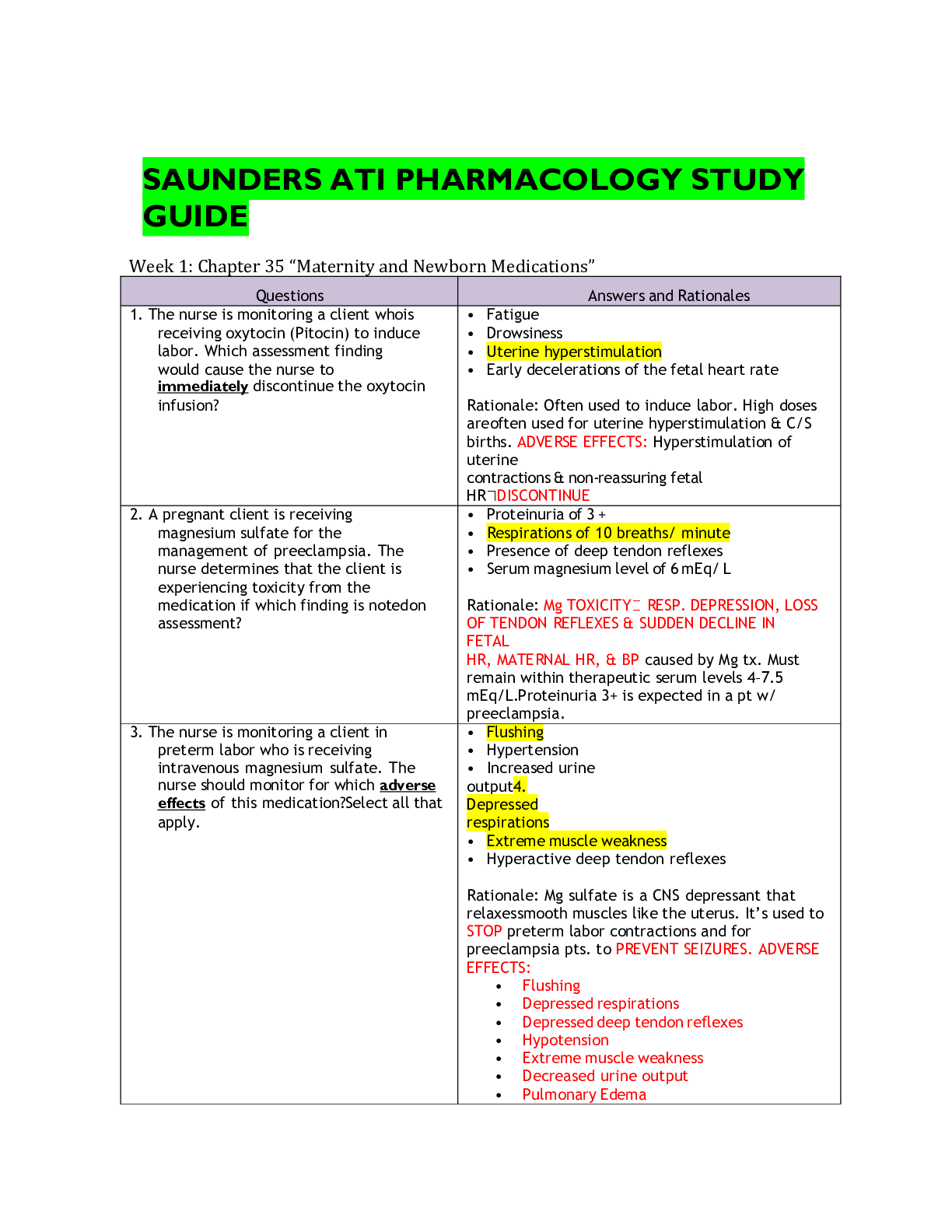*NURSING > STUDY GUIDE > NUR 2407 Pharmacology Study Guide Exam #2 (All)
NUR 2407 Pharmacology Study Guide Exam #2
Document Content and Description Below
NUR 2407 Pharmacology Exam #2 Study Guide Pharmacology Exam #2 [Unit 7: Pain and Inflammation Management Drugs] Nonsteroidal Antiinflammatory Drugs (NSAIDS): o Aspirin (ASA)- (Salicylates) use... d to reduce pain and inflammation symptoms, decreased fever, and inhibit platelet aggregation; for osteoarthritis and rheumatoid arthritis Side Effects: Dizziness Drowsiness loss of appetite (anorexia) nausea and vomiting diarrhea heartburn abdominal pain rash Adverse Reactions: Tinnitus hearing loss G.I. ulceration and bleeding Life Threatening: hemolytic anemia bronchospasm anaphylaxis hepatotoxicity Drug Interaction: increased risk of bleeding with anticoagulants and other NSAIDs increased risk of hypoglycemia with oral hypoglycemic drugs effects are decreased by corticosteroids increased ulcerogenecid effect with glucocorticoids Contraindications: hypersensitivity to salicylates or NSAIDs flu or virus symptoms in children G.I. bleeding Caution: renal or hepatic disorders, gout, alcoholism, anticoagulant therapy, G.I. bleeding, bone marrow suppression, head trauma, immunosuppression, pregnancy. Anemia Measles Chicken Pox Reye Syndrome Decreased prothrombin levels (clotting factor) Salicylate Poisoning: tinnitus (ringing in ears) elevated temperature nausea and vomiting dehydration/disorientation hyperventilation severe toxicity – o metabolic acidosis o seizures severe toxicity occurs with 300 to 500 mg/kg acute ingestion of aspirin Steroids: o reverse inflammation systemic in a profound way o They suppress the anti-inflammatory response of the body (Increased risk of infection) o NSAIDs reverse inflammation (and related pain) in a more limited way (not steroid) o steroids may treat diarrhea caused by ulcerative colitis o Take in the morning (AM) with food o What is the role for steroids in the treatment of anaphylaxis? Dilate airways to assist with breathing and also decrease inflammation o Side Effects and Adverse Reactions- Increased risk of Infection Hyperglycemia (high blood sugar) Hypertension (High BP) Hypokalemia sodium retention Puffy face (moon face) edema (slow weight gain not rapid-often fluid retention) Increased bleeding risk gastric erosion poor wound healing Addison’s disease: Occurs when the adrenal glands do not produce enough cortisol and often insufficient levels of aldosterone. It can because by prolonged use of steroids another common cause of secondary adrenal insufficiency occurs when people who take corticosteroids for treatment of chronic conditions, such as asthma or arthritis, abruptly stopped taking their corticosteroids o Drug Interactions- Avoid caffeine Do not take with NSAIDS Increased risk of bleeding and gastric ulcers o Nursing Priorities- Take with food Take in morning (insomnia) What does a fever indicate? Infection (due to immunodepression) Very sick take seriously Gradually discontinue dose Corticosteroids: o Use- treatment of adrenocortical deficiency, other endocrine disorders, allergic states, collagen diseases, dermatological diseases, G.I. disorders, hematological disorders, respiratory disease, rheumatoid disorders. o Side Effects and Adverse Reactions- Seizures edema due to sodium retention hypertension poor wound healing moon face hyperglycemia G.I. perforation pancreatitis o Contraindications- live viral vaccines immunosuppressive drugs use can exacerbate fungal infections PO use can induce peptic ulcers and should be given with meals/antacids long-term use can result in osteoporosis, related fractures, tendon ruptures use can increase blood pressure, water retention, potassium excretion o Drug Interactions- use with aspirin, NSAIDs produces additive effects antidiabetic drugs may require increase in dosage use with toxoid/vaccines decreased their antibody formation o Prednisone/Hydrocortisone (Short-acting corticosteroids) Use: used in a variety of chronic illnesses, including inflammatory, allergic, hematologic, neoplastic, and autoimmune diseases Side Effects and Adverse Reactions: Hypertension hyperglycemia fluid retention (long-term high dosages) hypokalemia peptic ulceration anorexia Cushingoid appearance (moon face, buffalo hump) increased susceptibility for infection weight gain (often fluid retention) Contraindications: active untreated infections administration of live virus vaccines May mask signs of potential infection Nursing Priorities: administer PO with food avoid administration at bedtime (insomnia) avoid exposure to infection Sudden withdrawal can be deadly do not take with aspirin or other NSAIDs .....Continued... [Show More]
Last updated: 2 years ago
Preview 1 out of 24 pages

Buy this document to get the full access instantly
Instant Download Access after purchase
Buy NowInstant download
We Accept:

Also available in bundle (1)

NUR 2407 Pharmacology Exam #1 & Exam #2 Study Guides
NUR 2407 Pharmacology Exam #1 & Exam #2 Study Guides|NUR 2407 Pharmacology Exam #1 & Exam #2 Study Guides
By Ajay25 4 years ago
$25
2
Reviews( 0 )
$16.00
Can't find what you want? Try our AI powered Search
Document information
Connected school, study & course
About the document
Uploaded On
Jul 24, 2021
Number of pages
24
Written in
Additional information
This document has been written for:
Uploaded
Jul 24, 2021
Downloads
0
Views
106


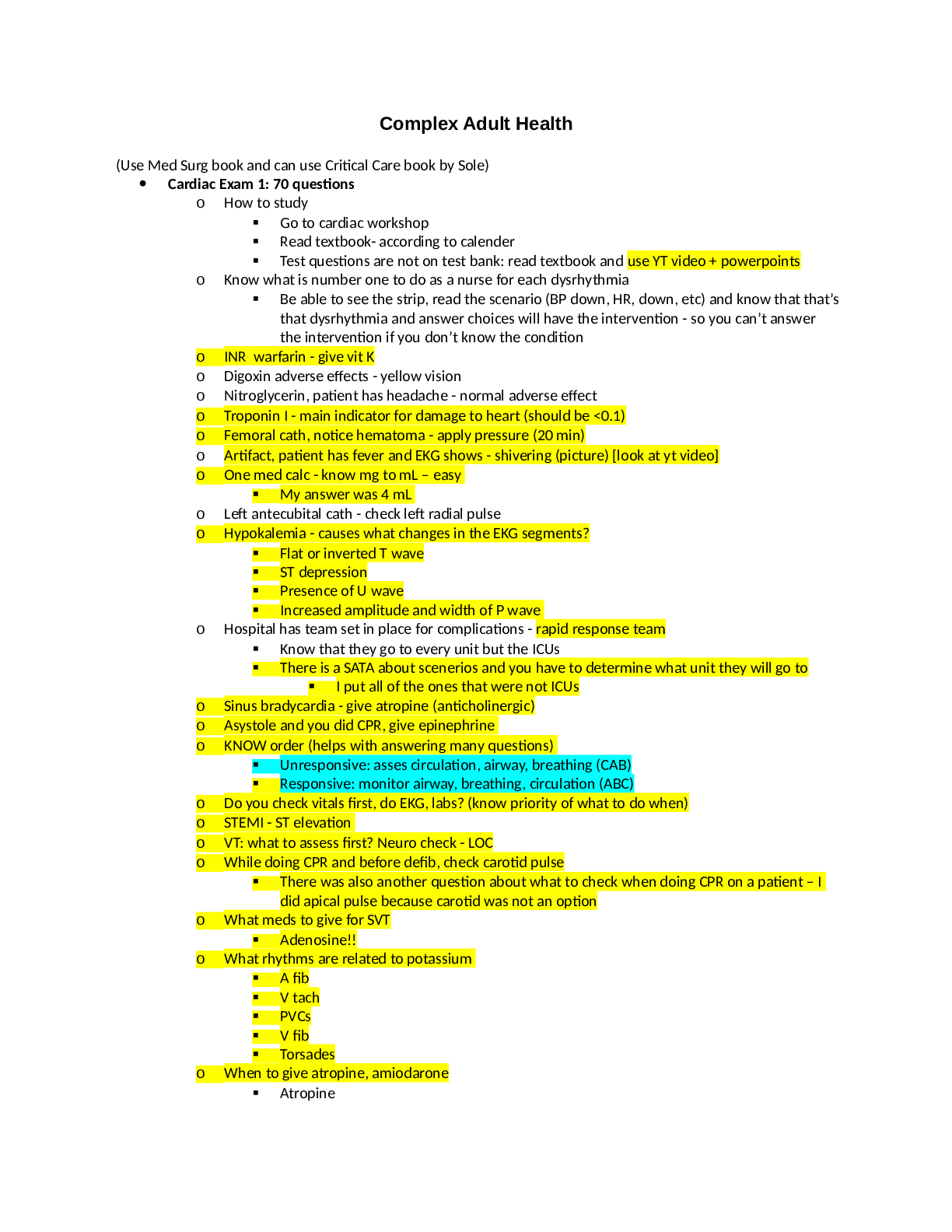
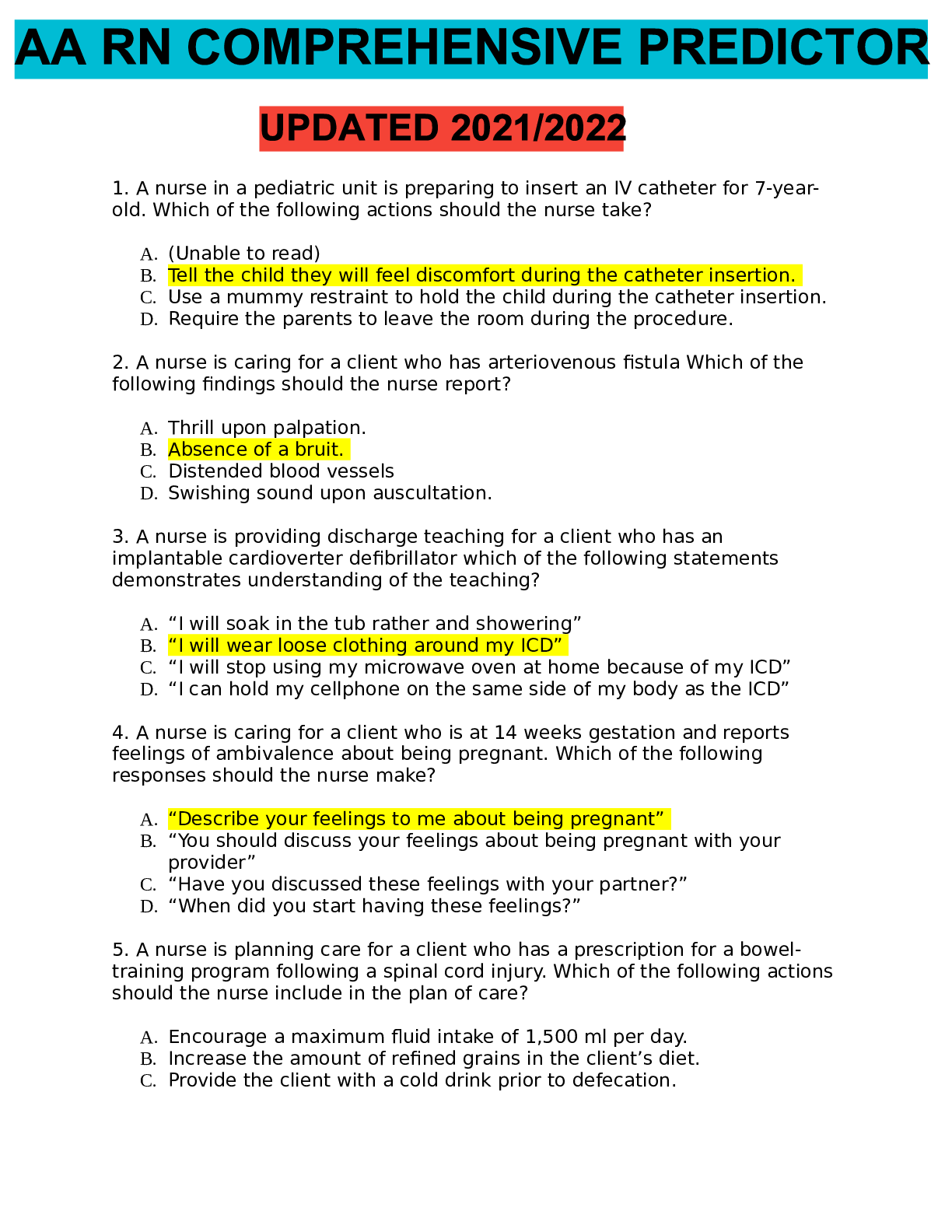
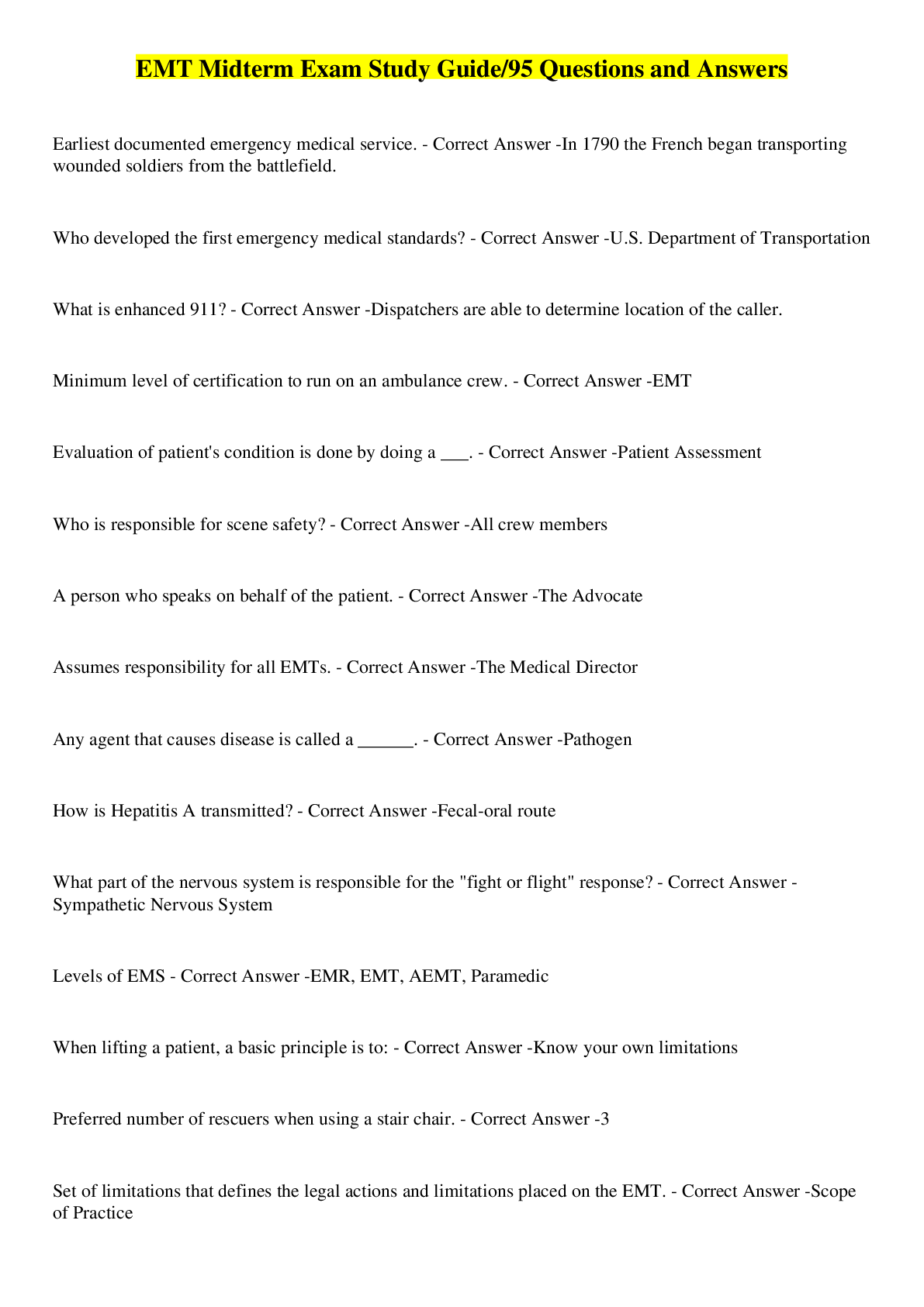
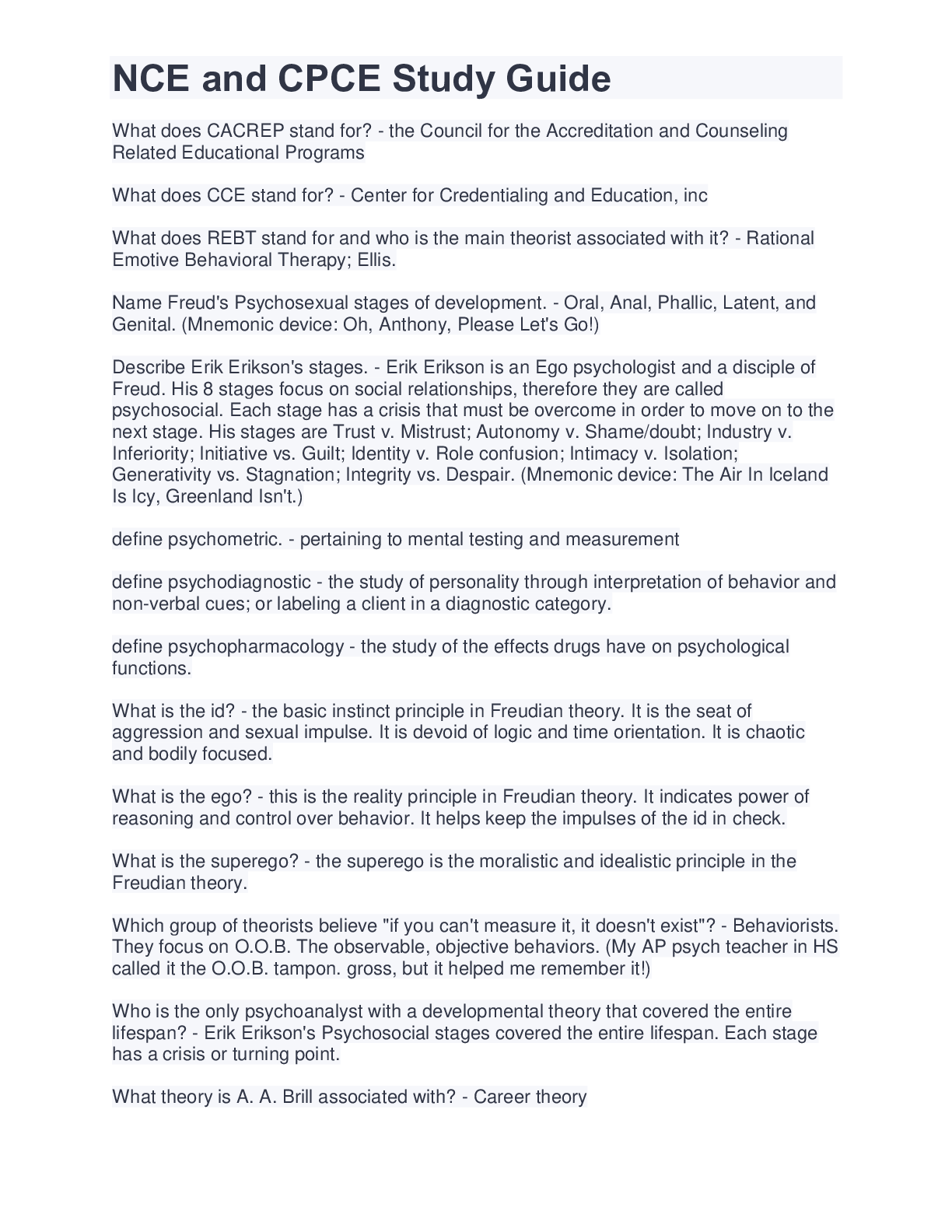
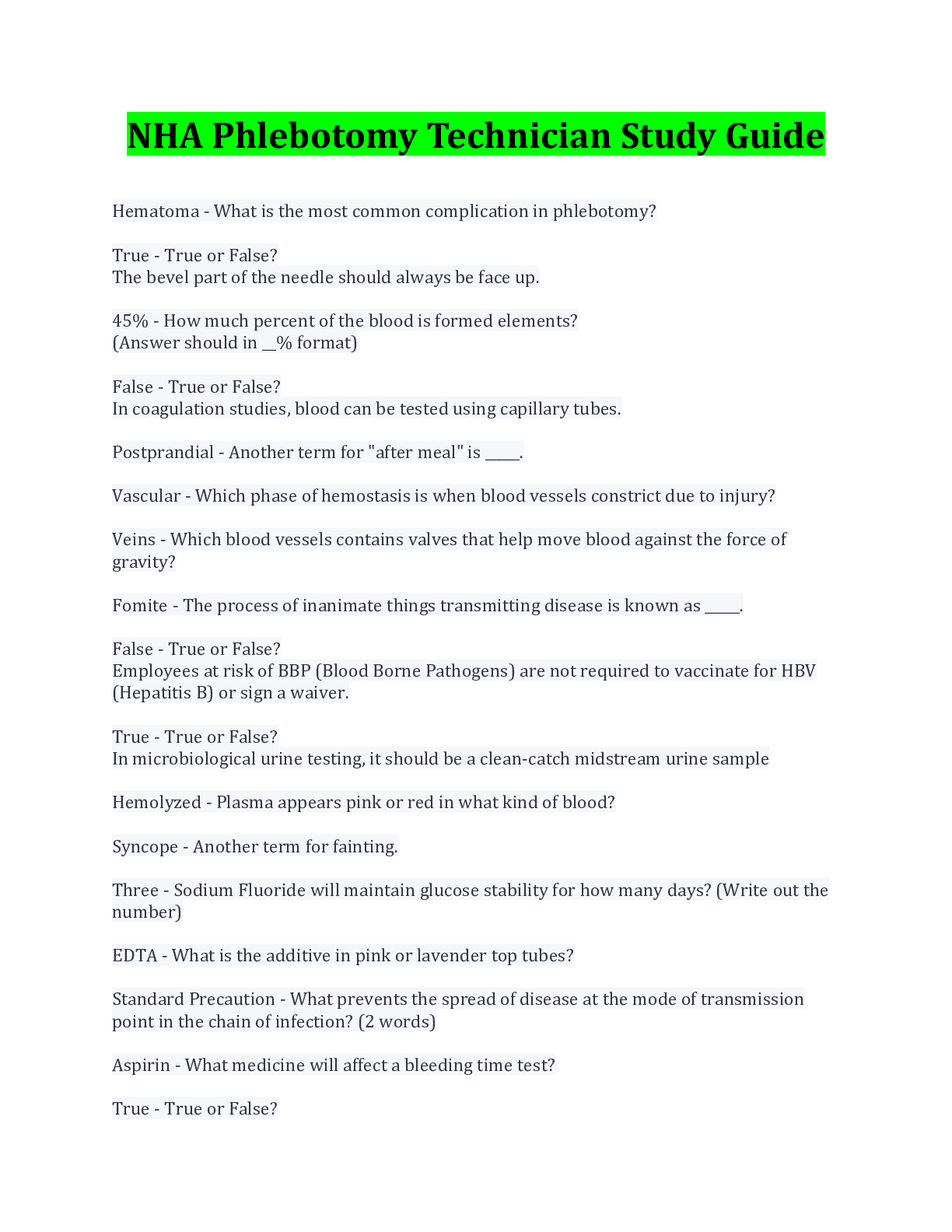
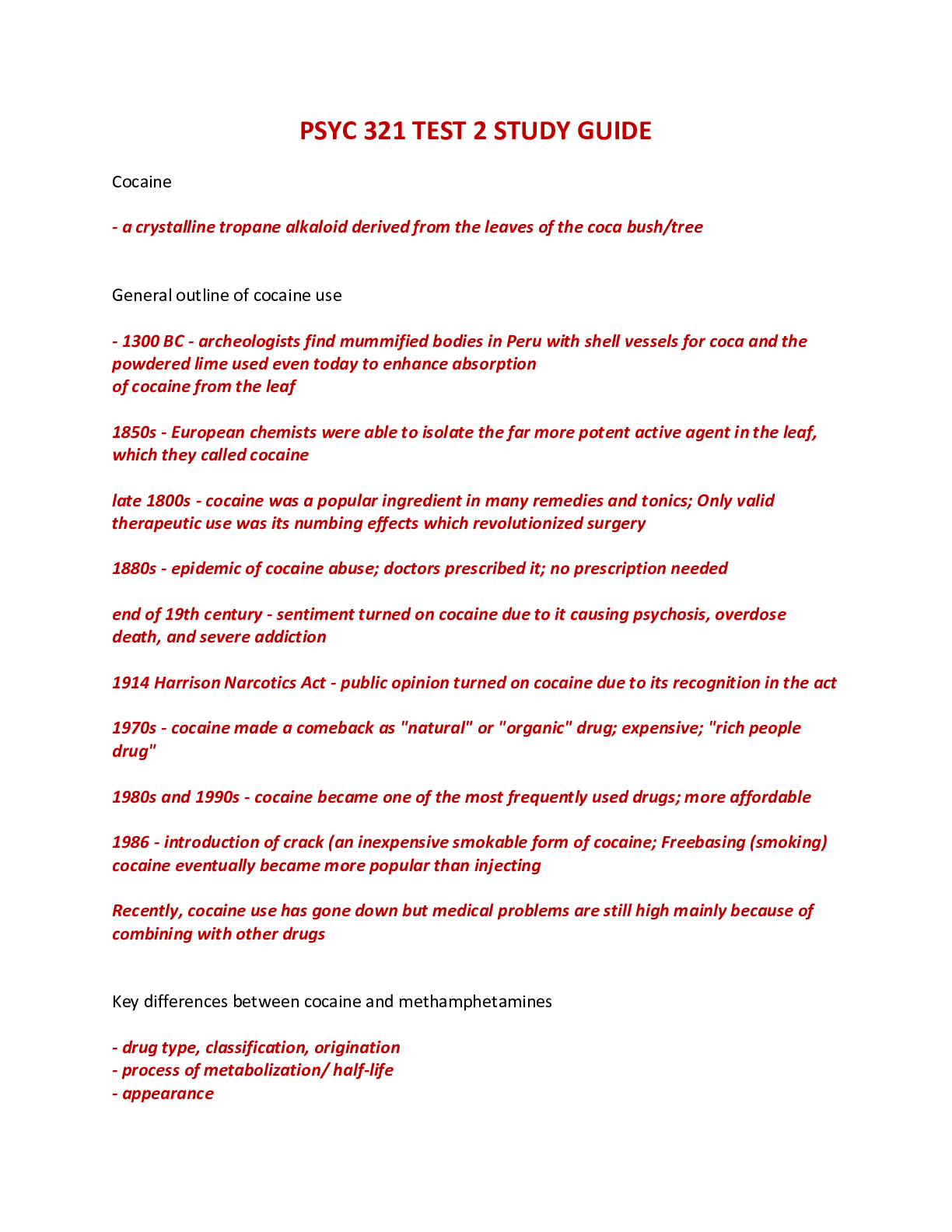
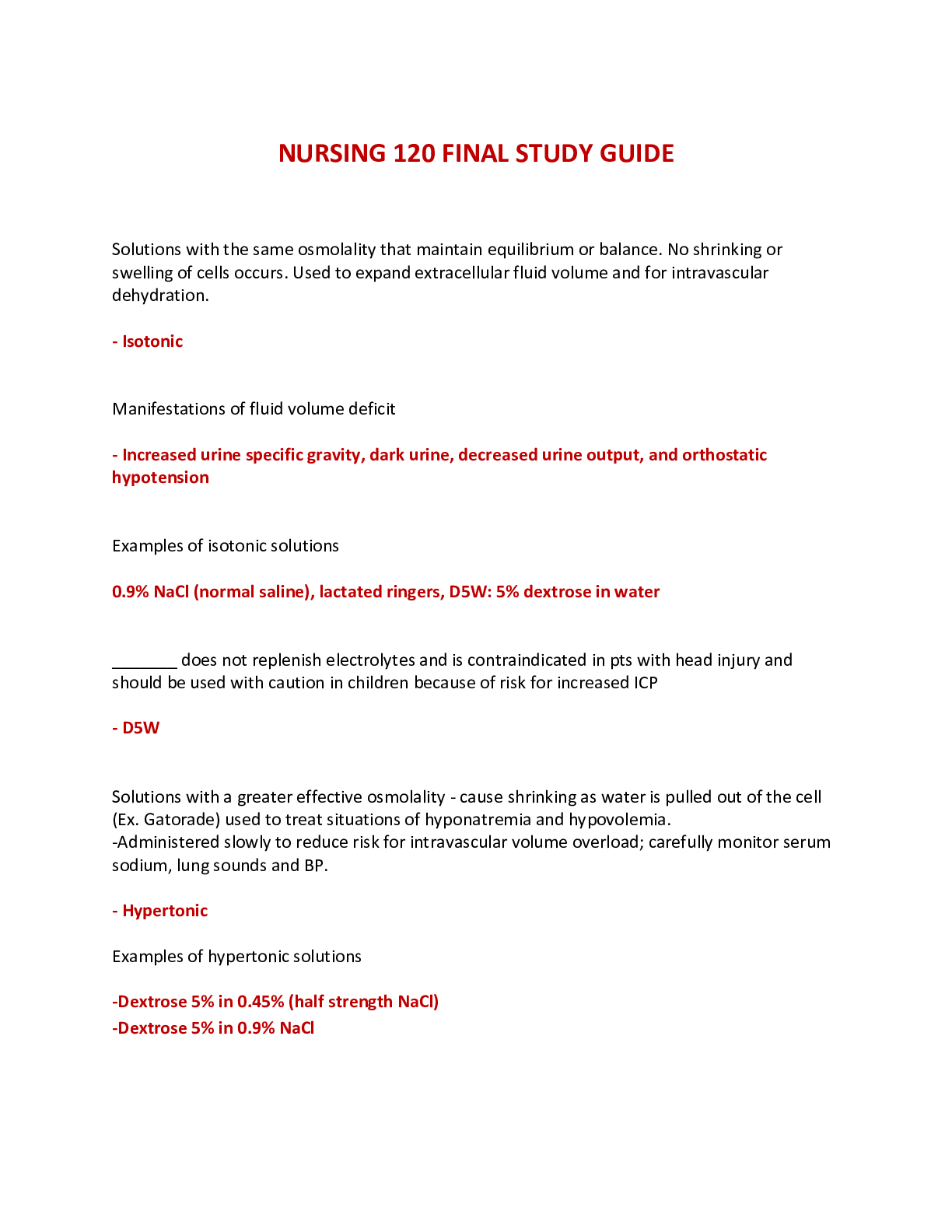



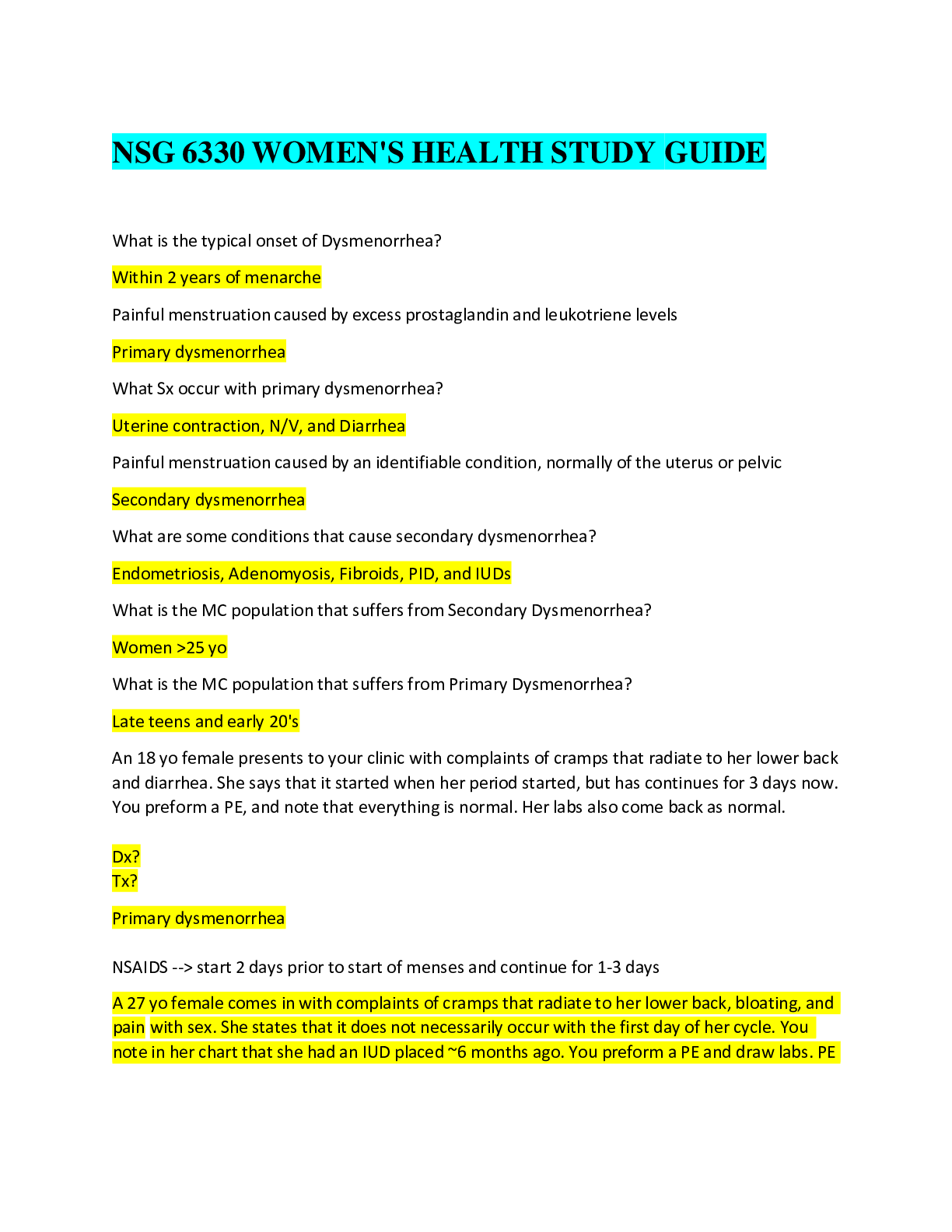




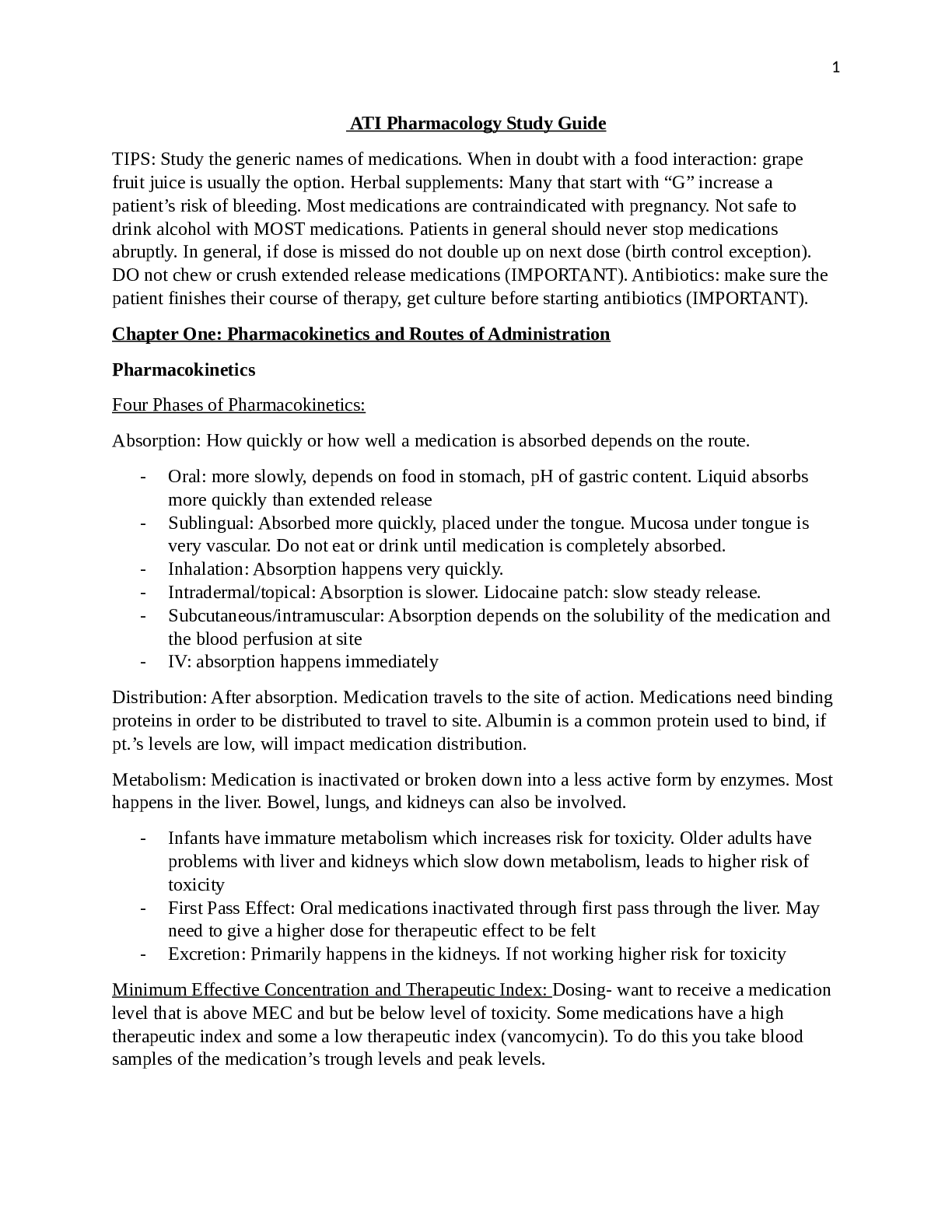


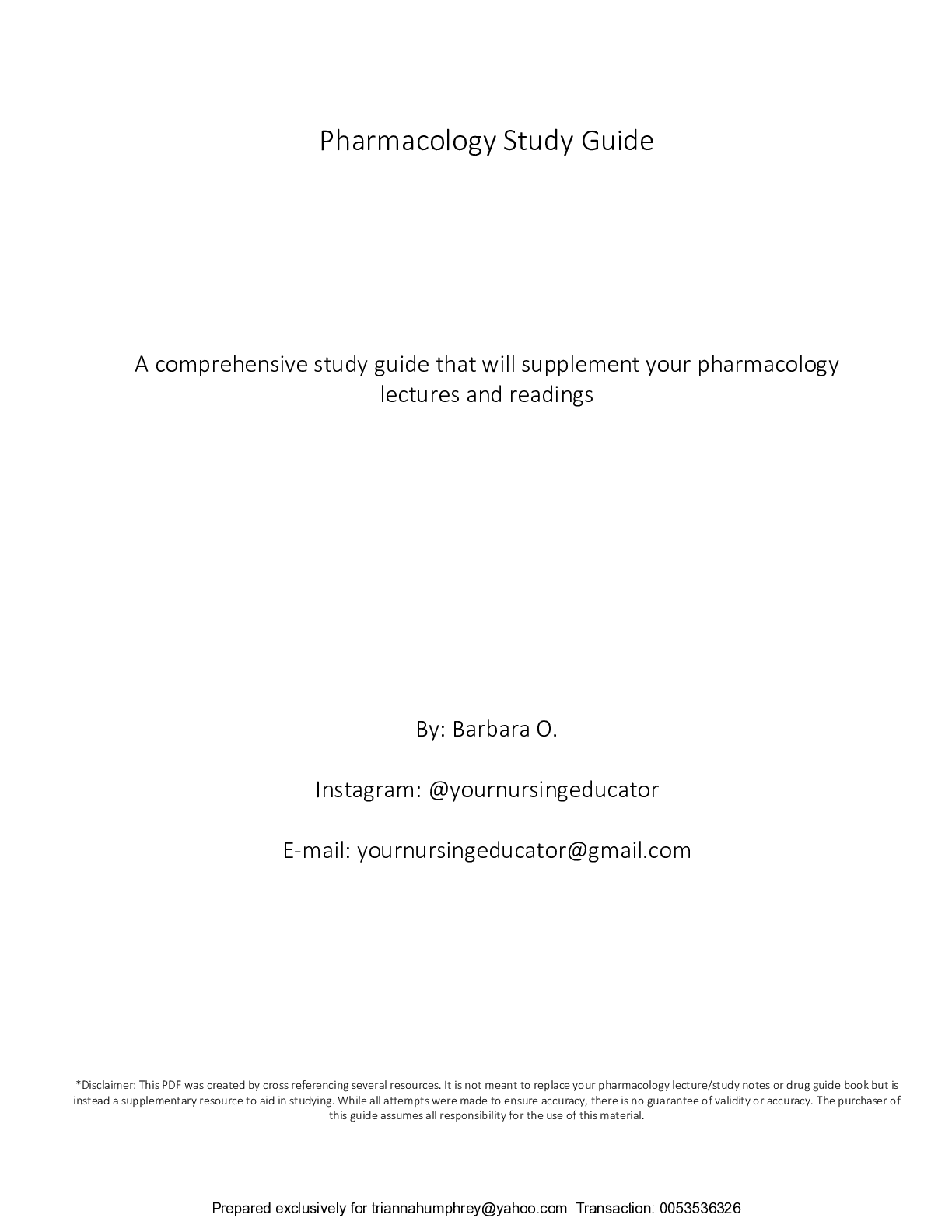
, Latest Questions and Answers with Explanations for Revision, All Correct Latest Review, (Latest 2021) Correct Study Guide, Download to Score A.png)
